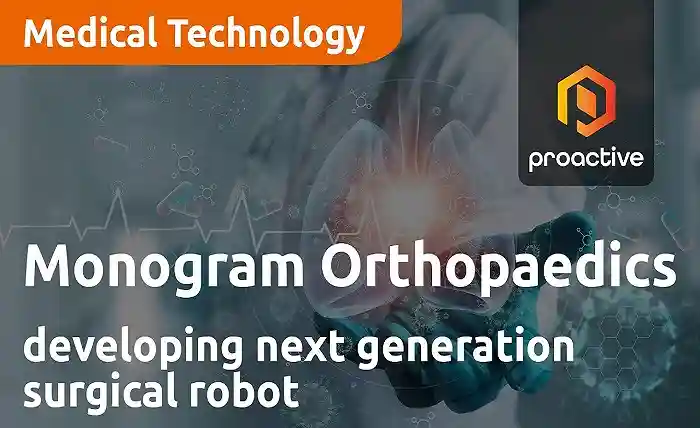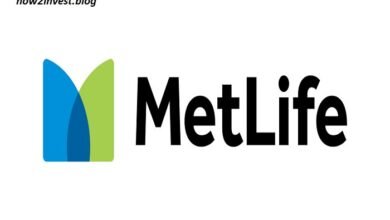Monogram Orthopedics: A Revolutionary Startup in the Joint Replacement Market

What is Monogram Orthopedics?
Monogram Orthopedics is a medical technology startup that aims to revolutionize the field of joint replacement and orthopedic implants. The company’s mission is to make orthopedics personal by providing customized, 3D-printed implants that match each patient’s anatomy and biomechanics. The company also develops robotic systems that enable precise and minimally invasive surgery for implanting the personalized implants.
Monogram Orthopedics was founded in 2016 by Dr. Douglas Unis, an orthopedic surgeon and professor at Mount Sinai Hospital in New York, and Michael Goldberg, a serial entrepreneur and investor. The company is based in Austin, Texas, and has raised over $50 million from various sources, including crowdfunding platforms like StartEngine and Republic.
Why is Monogram Orthopedics innovative?
Monogram Orthopedics claims to be the first company to combine 3D printing, robotics, and digital image analysis to create a new paradigm for joint replacement. The company’s technology addresses some of the major challenges and limitations of the current joint replacement market, such as:
- Poor fit and alignment of generic-sized implants that can cause pain, instability, infection, loosening, and revision surgery.
- High cost and complexity of surgery that requires specialized instruments, multiple trays of implants, and extensive preoperative planning.
- Lack of personalization and customization of implants that can account for individual variations in anatomy, biomechanics, activity level, and preferences.
Monogram Orthopedics’ solution consists of three main components:
- A cloud-based software platform that uses artificial intelligence and machine learning to analyze digital images of the patient’s joint (such as X-rays or CT scans) and generate a personalized implant design that fits the patient’s bone geometry and optimizes the joint mechanics.
- A 3D printing facility that uses advanced materials and processes to manufacture the personalized implant in a matter of hours.
- A robotic surgical system that uses a novel active navigated milling technique to prepare the bone for the implant with high accuracy and minimal tissue damage. The robotic system also provides real-time feedback and guidance to the surgeon during the procedure.
Monogram Orthopedics claims that its technology can offer several benefits to patients, surgeons, hospitals, and payers, such as:
- Improved clinical outcomes and patient satisfaction by reducing the risk of complications, improving the stability and function of the joint, and enhancing the aesthetic appearance of the implant.
- Reduced surgical time and cost by simplifying the surgical workflow, eliminating the need for multiple implant sizes and instruments, and reducing the inventory and sterilization requirements.
- Increased access and affordability by lowering the barriers to entry for surgeons and facilities, expanding the patient population eligible for joint replacement, and creating a more competitive and transparent pricing model.
What are the challenges and opportunities for Monogram Orthopedics?
Monogram Orthopedics is operating in a large and growing market that is expected to reach $19.4 billion by 2027. The global demand for joint replacement is driven by factors such as aging population, rising prevalence of osteoarthritis, obesity, diabetes, sports injuries, and increasing awareness and preference for minimally invasive procedures.
However, Monogram Orthopedics also faces significant challenges and competition in its quest to disrupt the joint replacement market. Some of these include:
- Regulatory hurdles and clinical validation: Monogram Orthopedics will need to obtain approval from the U.S. Food and Drug Administration (FDA) and other regulatory bodies before it can launch its products in the market. The company will also need to demonstrate the safety, efficacy, durability, and cost-effectiveness of its technology through clinical trials and studies.
- Market adoption and penetration: Monogram Orthopedics will need to overcome the inertia and resistance from surgeons, hospitals, payers, and patients who are accustomed to using conventional implants and techniques. The company will also need to establish a strong distribution network, sales force, marketing strategy, customer service, and reimbursement model to reach its target customers.
- Competitive landscape: Monogram Orthopedics will face competition from established players in the joint replacement market, such as Zimmer Biomet, Stryker, DePuy Synthes (Johnson & Johnson), Smith & Nephew, Medtronic, Conformis, etc. These companies have significant advantages in terms of brand recognition, market share, financial resources, research and development, product portfolio, regulatory experience, etc. Some of these companies are also developing their own 3D-printed implants or robotic systems that could pose a threat to Monogram Orthopedics’ differentiation.
Conclusion
Monogram Orthopedics is a promising startup that aims to revolutionize the joint replacement market by offering personalized, 3D-printed implants and robotic surgery. The company’s technology has the potential to improve the clinical outcomes and patient satisfaction, reduce the surgical time and cost, and increase the access and affordability of joint replacement. However, the company also faces significant challenges and competition in its journey to disrupt the joint replacement market. The company will need to obtain regulatory approval, validate its technology, penetrate the market, and overcome the competition from established players. Therefore, investing in Monogram Orthopedics is a high-risk, high-reward proposition that requires careful due diligence and analysis.



